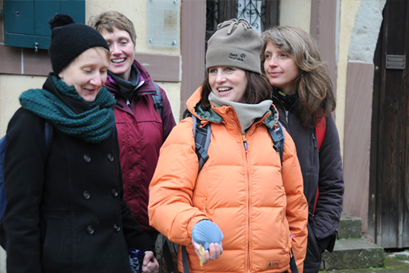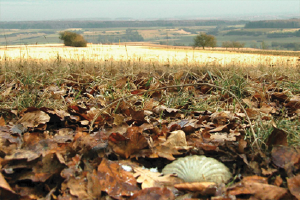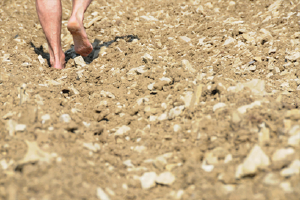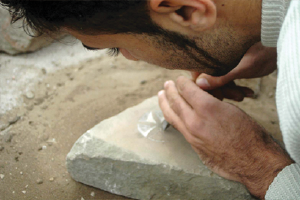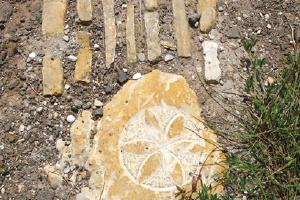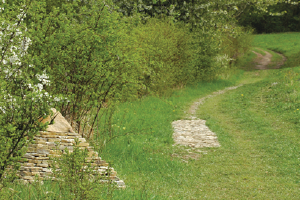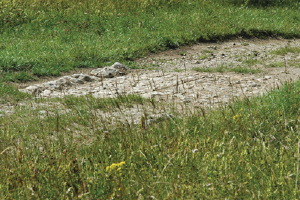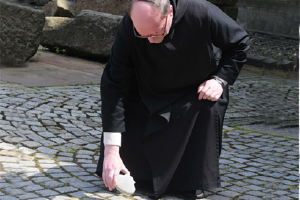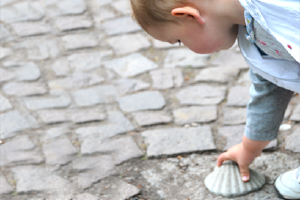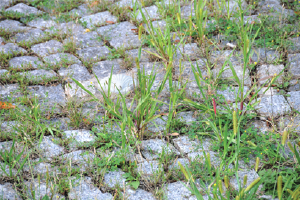Road sign
Scallop stones, ornaments from field stones, stars
If you look closely, you can spot trail signs at certain points along the routes of our project space: Scallop stones and in the Saarpfalz district and the Saarbrücken region also Ornaments from field stones and Stars. They distinguish the pilgrimage routes from other routes, give them their very special character. Over time, the waymarkers will acquire a patina, perhaps even perish. But they will remain visible as long as people value, preserve and care for them.
Symbolism of the road signs
The waymarkers establish a reference to the “vanished” medieval paths of the pilgrims of St. James and the still visible evidence of the building culture from that time. Guided by the stars, people already in the Middle Ages sought their paths towards Spain demonstrably also through the regions of our project area. The idea “Starry Path/
Symbolically, these floor works refer to various themes: On the one hand, to the designation Sternenweg (Starry Path), which has been in use since the Middle Ages and has been a synonym for the Way of St. James, especially in Spain. Likewise, they refer to the ancient amazement of people in the face of the starry sky and its interpretation as a guide to Santiago de Compostela. In addition, the symbol of the apostle James and all pilgrims of St. James, the scallop shell, is referred to (compare also Myth of the Way of St. James).
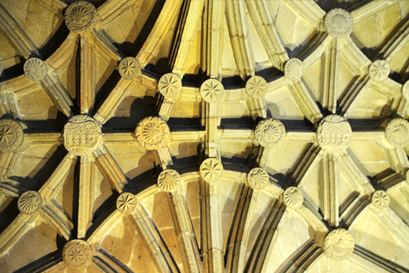
Star track in togetherness/Participation
In 2013, Strasbourg Cathedral, Mainz Cathedral and the most famous pilgrimage destination in Alsace, the medieval monastery on the Odilienberg, were also decorated with a scallop shell stone from Saarbrücken. This brings to over 200 the number of scallop shell stones that have been relocated so far in 2014 in the “Starry Path/
The Palatine, Lorraine, Alsace and Saarland routes of the pilgrims of St. James via the old bishop’s see are now almost star-shaped in a symbolic connection. An almost inexhaustible reservoir of individually plannable way routes in connection with the way signs is supported by this Internet platform.
This “star track” could only be laid through a sensitive process of participation and the committed support of many people and municipal, church and tourist partners! The vision of a European togetherness - shoulder to shoulder - has been realized in an exemplary way. Therefore all involved a great recognition!
